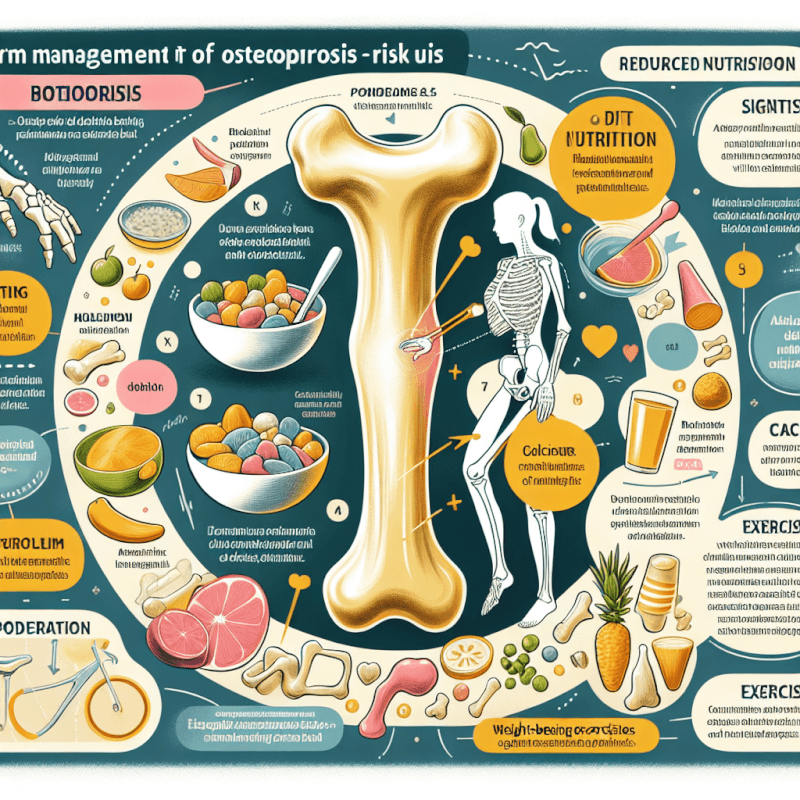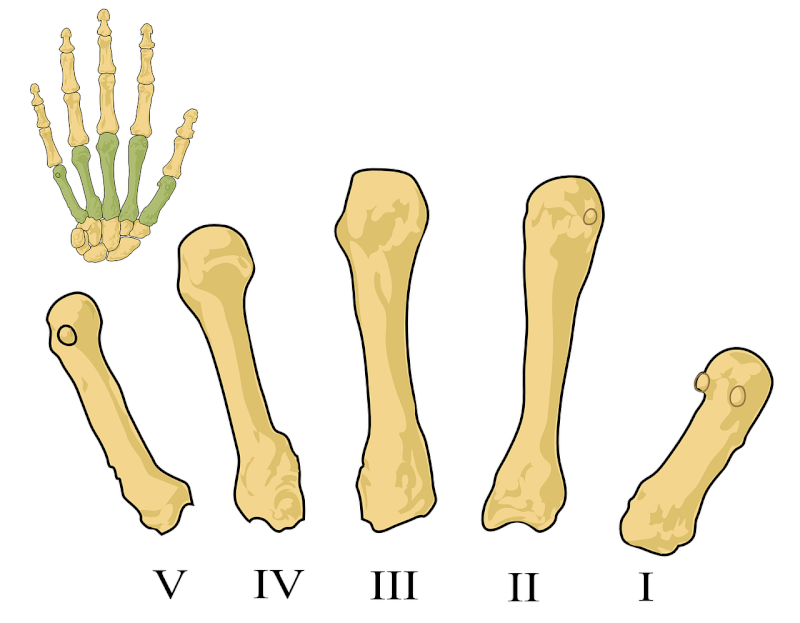Are you concerned about the possibility of developing osteoporosis? This article provides valuable insights into how you can take control of your health and reduce the risk of this condition through simple lifestyle changes. By focusing on your diet and incorporating regular exercise into your routine, you can strengthen your bones, improve your overall bone health, and minimize the chances of osteoporosis affecting your life. So, let’s explore some practical tips and strategies that will empower you to proactively manage and reduce the risk of osteoporosis.
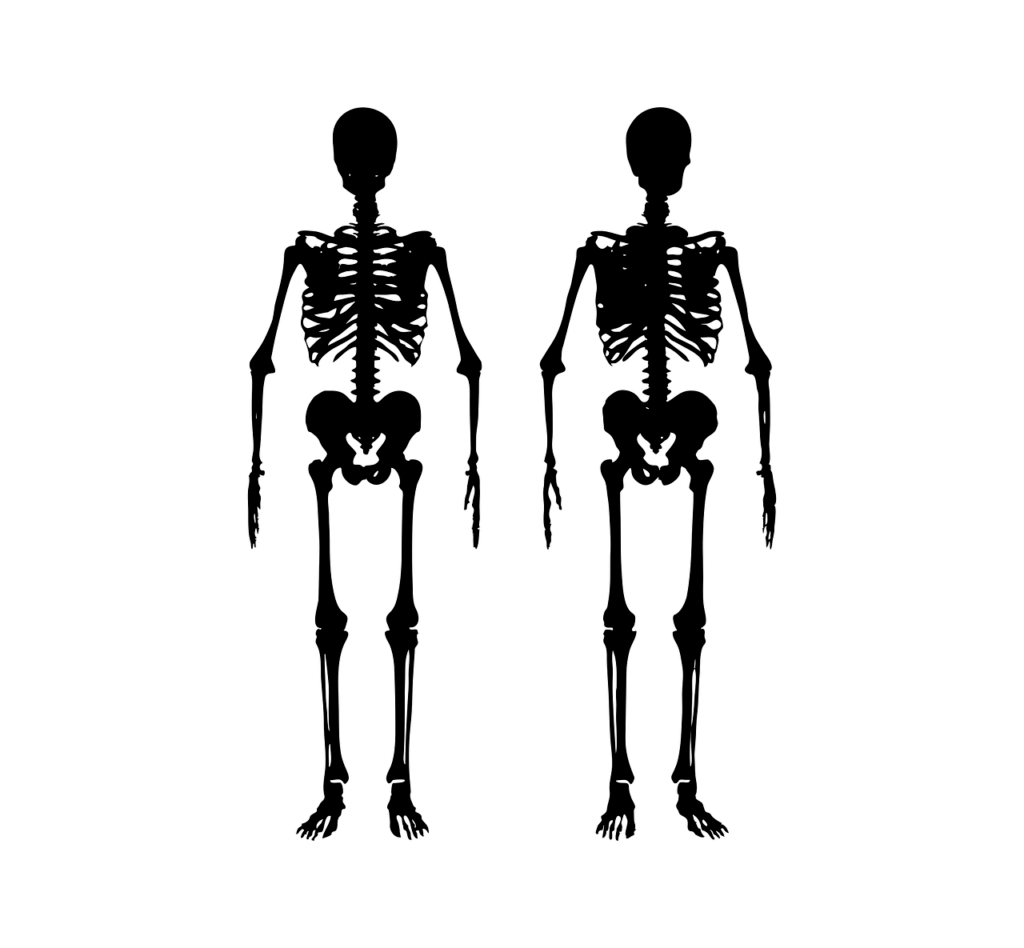
The Importance of Osteoporosis Management
Osteoporosis is a condition that weakens bones, making them fragile and susceptible to fractures. It affects millions of people worldwide, particularly women after menopause. While it may seem like an inevitable consequence of aging, there are various ways to manage and reduce the risk of osteoporosis. Taking proactive steps to prioritize bone health is crucial, as it can help prevent fractures, maintain mobility, and overall improve the quality of life.
Understanding Osteoporosis
To effectively manage osteoporosis, it is essential to understand what it is and how it affects the body. Osteoporosis occurs when the bones lose density and become more porous, making them brittle and prone to fractures. This loss of bone density can result in a hunched posture, height loss, and increased vulnerability to fractures, even from minor falls or bumps. It is primarily caused by an imbalance between bone formation and bone resorption, leading to a decrease in overall bone mass.
Risks and Consequences
The consequences of osteoporosis can be severe, which makes managing the condition crucial. Fractures caused by weak bones can significantly impact an individual’s quality of life, both physically and emotionally. Common sites for fractures include the hip, spine, and wrist, but fractures can occur in any bone. Hip fractures, in particular, can be life-altering, often resulting in decreased mobility, increased dependence, and a higher risk of mortality. Additionally, fractures in the spine can lead to chronic pain, limited mobility, and even a decrease in lung function due to the compression of the chest cavity.
Dietary Strategies for Osteoporosis Prevention
Diet plays a vital role in maintaining bone health and preventing osteoporosis. By focusing on specific nutrients and avoiding harmful substances, you can enhance the strength and density of your bones.
Calcium and Vitamin D
Calcium and vitamin D are crucial for bone health. Calcium is the main mineral found in bones and gives them their strength, while vitamin D aids in calcium absorption. By ensuring an adequate intake of calcium-rich foods such as dairy products, leafy greens, and fortified foods, you can promote strong bones. Additionally, spending time outdoors and exposing your skin to sunlight allows your body to produce vitamin D naturally. If you have difficulty meeting the recommended levels through diet and sun exposure alone, calcium and vitamin D supplements may be necessary.
Other Essential Nutrients
While calcium and vitamin D are essential, other nutrients also contribute to bone health. Magnesium, phosphorus, and vitamin K are examples of nutrients that play critical roles in maintaining bone density. Foods rich in magnesium include nuts, seeds, legumes, and whole grains. Phosphorus can be found in foods like meat, fish, dairy products, and beans. Green leafy vegetables and fermented foods, such as sauerkraut, are excellent sources of vitamin K.
Foods to Avoid
Just as there are foods that promote bone health, some should be consumed in moderation or avoided altogether. High sodium intake can lead to increased calcium excretion in the urine, potentially weakening bones over time. Processed foods, fast food, and pre-packaged meals often contain excessive amounts of sodium. Additionally, excessive alcohol consumption and excessive caffeine intake could negatively affect bone health. It is important to maintain a balanced diet and be mindful of these potentially detrimental dietary factors.
Exercise for Stronger Bones
In addition to a healthy diet, regular exercise is crucial for managing and reducing the risk of osteoporosis. Exercise strengthens bones, improves muscle strength and balance, and reduces the likelihood of falls.
Weight-Bearing Exercises
Weight-bearing exercises are activities that require your body to work against gravity, putting stress on your bones. These types of exercises can include walking, jogging, dancing, and stair climbing. By engaging in weight-bearing exercises, you stimulate bone growth and increase bone density, ultimately improving bone strength.
Muscle-Strengthening Exercises
Muscle-strengthening exercises focus on building and toning muscles to support bone health. Resistance training with weights, resistance bands, or bodyweight exercises such as squats and lunges are effective in maintaining muscle mass and bone density. These exercises can be modified according to your fitness level and can be gradually increased to challenge your muscles further.
Balance and Posture Exercises
Maintaining good balance and posture is crucial for preventing falls and reducing the risk of fractures. Balance exercises, such as standing on one leg or practicing yoga, can improve stability and coordination. Posture exercises, such as shoulder rolls or core-strengthening exercises, can help maintain proper alignment and reduce the strain on bones and joints.
Combining Diet and Exercise for Osteoporosis Prevention
To achieve optimal results in managing and reducing the risk of osteoporosis, combining a healthy diet with regular exercise is highly recommended. Diet and exercise complement each other and work synergistically to improve bone health.
Role of Diet and Exercise in Bone Health
A nutrient-rich diet provides the necessary building blocks for bone formation and maintenance. By consuming a variety of foods rich in calcium, vitamin D, and other essential nutrients, you provide your body with the raw materials it needs to support bone health. Additionally, engaging in regular exercise, particularly weight-bearing and muscle-strengthening exercises, stimulates bone growth and enhances bone density.
Creating a Balanced Osteoporosis Prevention Plan
To create a balanced osteoporosis prevention plan, it is advisable to consult with a healthcare professional or a registered dietitian. They can assess your specific nutritional needs and provide personalized recommendations. Your prevention plan may include dietary modifications, exercise routines, and lifestyle changes tailored to your individual requirements. Monitoring your progress regularly and making adjustments as necessary will help ensure that your prevention plan remains effective and sustainable.
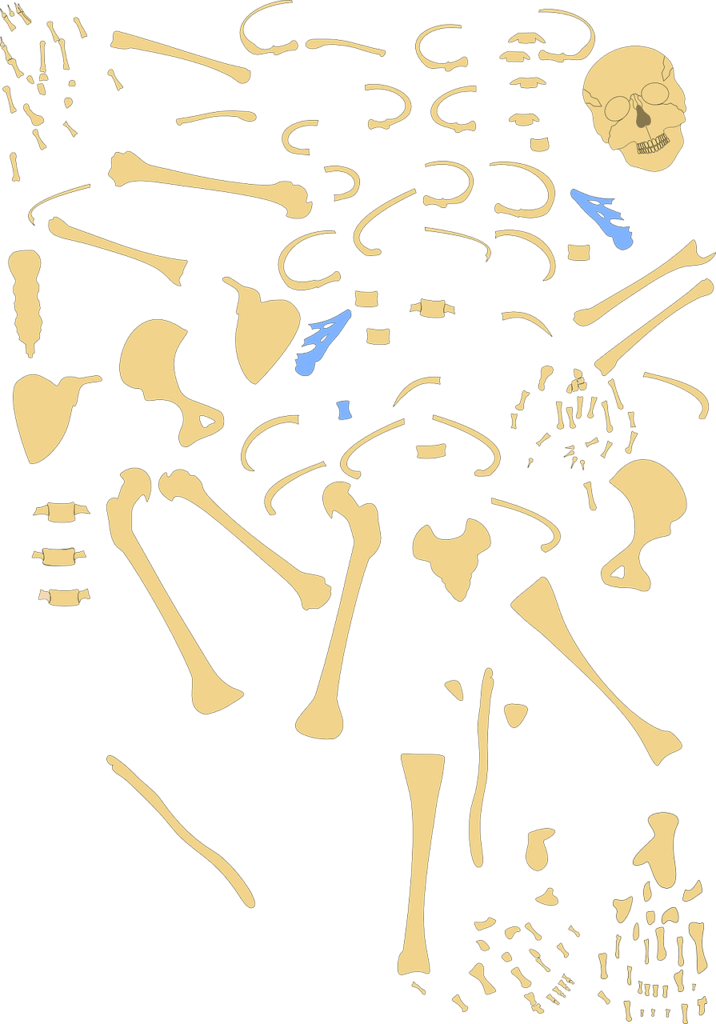
Lifestyle Factors that Influence Osteoporosis Risk
Apart from diet and exercise, several lifestyle factors can influence the risk of developing osteoporosis. By addressing these factors, you can further reduce the likelihood of developing this condition.
Maintaining a Healthy Weight
Maintaining a healthy weight is essential for overall well-being, including bone health. Both excessive weight and being underweight can have negative effects on bone density. Being overweight can put excess stress on bones, while being underweight often means inadequate nutrient intake, including the ones necessary for bone formation. Striving for a healthy weight through a balanced diet and regular exercise contributes to optimal bone health.
Limiting Alcohol and Tobacco Use
Excessive alcohol consumption and tobacco use have been linked to osteoporosis and increased fracture risk. Alcohol interferes with the absorption of calcium and vitamin D and may impair bone formation. Smoking, on the other hand, can decrease estrogen levels, affecting bone density and increasing the risk of fractures. Limiting or avoiding these substances is essential for reducing osteoporosis risk.
Reducing Falls and Fracture Risks
Taking measures to reduce falls and fracture risks is crucial, especially for individuals with osteoporosis. Ensuring a safe home environment by removing hazards and installing handrails and grab bars can help prevent falls. Wearing appropriate footwear, maintaining good lighting, and using assistive devices for stability can also minimize the risk of accidents. Additionally, practicing proper body mechanics, such as bending at the knees when lifting heavy objects, can protect bones from unnecessary strain.
Medical Treatments for Osteoporosis
In some cases, medical treatments may be necessary to manage and treat osteoporosis, particularly for individuals at high risk or with significant bone loss.
Pharmaceutical Options
Pharmaceutical treatments for osteoporosis aim to slow or halt bone loss and reduce the risk of fractures. These treatments often include medications called bisphosphonates, which help to maintain bone density by inhibiting the cells responsible for bone breakdown. Other medications, such as hormone therapies, selective estrogen receptor modulators, and calcitonin, may also be prescribed based on individual needs and considerations. It is important to discuss the potential benefits and risks of these medications with a healthcare professional.
Hormone Therapy
Hormone therapy is a treatment option for postmenopausal women with osteoporosis. Estrogen therapy, often combined with progestin, can help prevent bone loss and reduce fracture risk. However, hormone therapy is not suitable for everyone and requires careful consideration and monitoring due to potential side effects and contraindications. Consulting with a healthcare professional is crucial when considering hormone therapy as a treatment option.
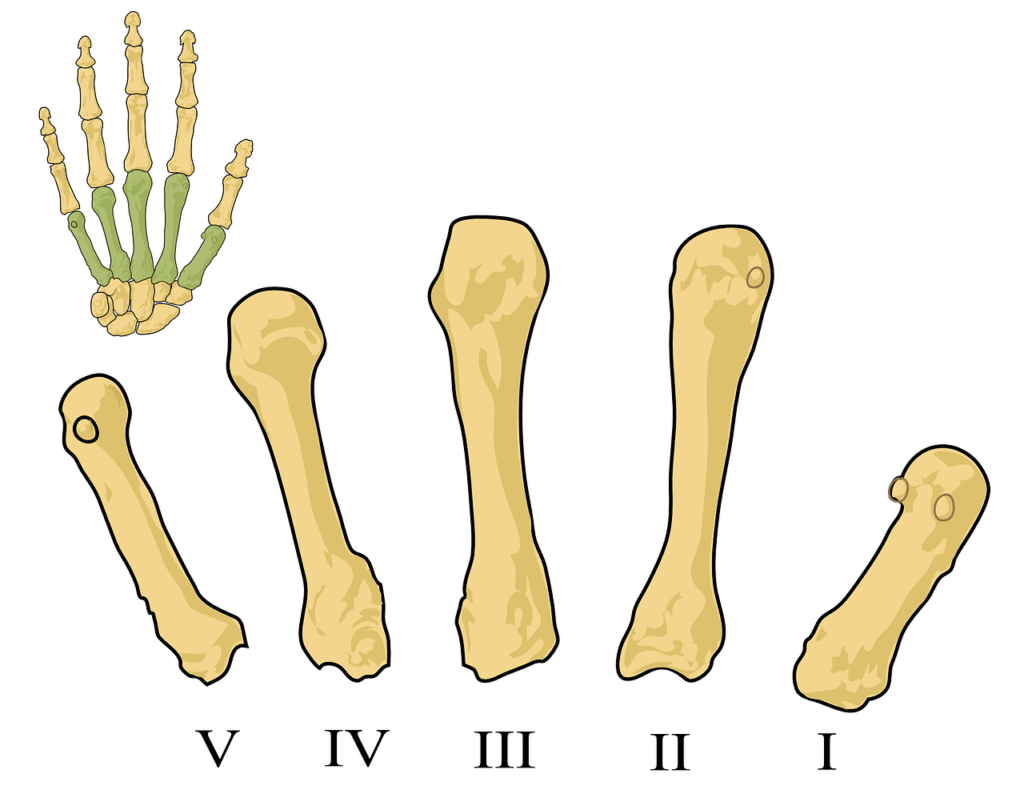
Supplements for Osteoporosis Prevention
In addition to a balanced diet, supplements can be beneficial for individuals at risk of osteoporosis or those with inadequate nutrient intake.
Calcium Supplements
Calcium supplements are commonly recommended to ensure sufficient intake, especially for individuals who have difficulty meeting their calcium needs through diet alone. Calcium supplements should be taken in conjunction with a well-balanced diet and should not exceed the recommended daily allowances. It is important to note that excessive calcium intake can lead to mineral imbalances and potential health complications, so it is essential to consult with a healthcare professional before starting any supplementation regimen.
Vitamin D Supplements
Vitamin D supplements may be necessary for individuals with limited sun exposure or those with low levels of vitamin D in their blood. As vitamin D is essential for calcium absorption and bone health, maintaining adequate levels is crucial. Similar to calcium supplements, it is important to consult with a healthcare professional to determine the appropriate dosage and duration of vitamin D supplementation.
Other Nutritional Supplements
There are other nutritional supplements that may have a positive impact on bone health, such as magnesium, phosphorus, and vitamin K. These supplements should be used under the guidance of a healthcare professional, as excessive intake can lead to adverse effects. It is always important to prioritize a nutrient-rich diet before considering supplementation and to ensure that any supplements are used in combination with a healthy lifestyle.
Sensible Strategies for Osteoporosis Prevention
Managing and reducing the risk of osteoporosis goes beyond diet, exercise, and supplements. By adopting sensible strategies and taking control of your bone health, you can make a significant difference in preventing the onset and progression of this condition.
Knowing Your Risk Factors
Understanding your individual risk factors for osteoporosis is crucial in developing a comprehensive prevention plan. Factors such as age, gender, family history, and hormone levels can influence your risk. Additionally, certain medical conditions, such as rheumatoid arthritis or celiac disease, may increase the likelihood of developing osteoporosis. By knowing your risk factors, you can take appropriate measures to address them effectively.
Regular Bone Density Testing
Regular bone density testing, such as a dual-energy X-ray absorptiometry (DEXA) scan, is an effective way to assess your bone health and monitor changes over time. This non-invasive test provides accurate information about your bone density and can help guide treatment decisions if necessary. Your healthcare professional can recommend an appropriate testing schedule based on your individual risk factors and medical history.
Consulting with a Healthcare Professional
When it comes to managing and preventing osteoporosis, consulting with a healthcare professional is paramount. A primary care physician, endocrinologist, or rheumatologist can provide guidance, perform necessary evaluations, and develop an individualized prevention plan based on your unique needs. They can help determine the most effective dietary and exercise strategies for you, monitor your progress, and adjust your treatment plan as necessary.
In conclusion, managing and reducing the risk of osteoporosis through diet and exercise is essential for maintaining strong and healthy bones. By understanding the importance of osteoporosis management, adopting a nutrient-rich diet, engaging in regular exercise, and addressing lifestyle factors, you can significantly reduce the likelihood of fractures and improve your overall bone health. Remember to consult with a healthcare professional to develop a personalized prevention plan and to ensure that you are meeting your individual needs for optimal bone health. With the right strategies and support, you can take control of your bone health and enjoy an active and fulfilling life.
